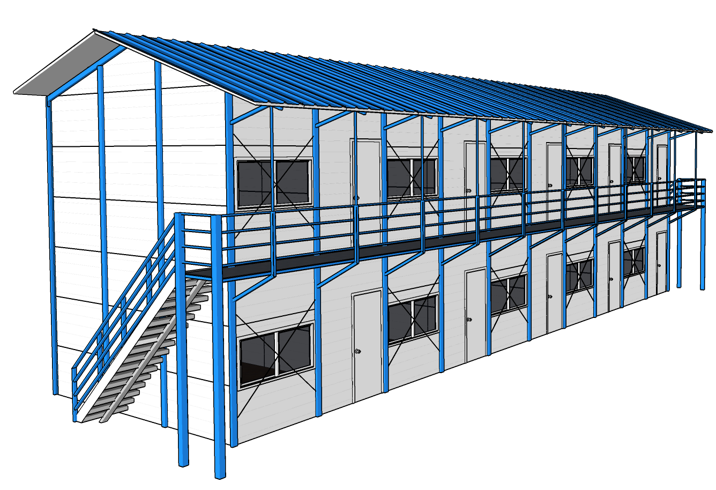Information
-
Document No.
-
Audit Title
-
Client / Site
-
Conducted on
-
Prepared by
-
Location
-
Personnel
General Building Checks
-
Materials and products match what was specified
-
Timber is at specified moisture levels on installation.
-
Timber has the correct preservative treatment for its location.
-
The house is set out correctly on the site.
-
Plans and specifications are followed.
-
Materials are installed to manufacturers’ instructions so you get the warranty.
-
Finished construction is protected from the weather.
Early Stages Construction
-
Earthmoving and excavation
-
Is the hole for excavation staked out correctly?
-
Are the walls vertical and even?
-
Has it gone to the correct depth?
-
Are all cut earth faces supported and “cut in”?
-
Where can this affect neighbouring properties?
-
Retaining walls
-
Retaining walls must be included in the building consent and signed off.
-
Is the ground supported during construction?
-
Ensure the wall is drained behind and waterproofed/tanked if necessary.
-
Footings and foundations
-
Footings need to be straight and correctly positioned, though the finish doesn’t have to be smooth.
-
Drainage and underground plumbing
-
Are the pipes in the correct position, i.e. not where you may want to put paths or gardens?
-
Are the drain holes or pipe vents in locations that will interfere with future use of the grounds, e.g. where you may want to put paths or entertaining areas?
-
Are the vents in the right position?
-
Will the drains carry sufficient water?
-
Does your drainage system meet the Building Code?
-
Concrete slabs
-
The concrete is laid on top of several things put in beforehand. There is a layer of compacted base course, a polythene vapour barrier, plumbing pipes and pipes taking electrical and other cable, in-floor heating and polystyrene insulation if required.
-
There are additives that can be applied to the concrete to reduce cracking during or following curing; the concrete can be coloured, polished and/or ground.
-
Ensure the floor is fully laid in one pour and there is no lag between deliveries.
-
Ensure the concrete is cured properly under advice from your builder.
-
Scaffolding
-
Is your builder using scaffolding or approved safety measures for working from heights. If not, they can be fined up to $500,000 and imprisoned for two years.
-
Is the scaffolding secure?
-
Are there safety barriers?
Flooring and Framing
-
Wooden flooring
-
Are the floor joists even and solid?
-
Has the flooring timber been evenly laid?
-
Has the timber been sufficiently seasoned?
-
Are the plywood/chipboard panels secured properly and are they even – is there any movement or squeaks?
-
Underfloor foil insulation is the minimum level of insulation you require under the Building Act but never shy away from increasing your level of insulation.
-
Framing
-
Are the nogs (the cross-bars in the framing) level with each other?
-
Are the studs (the upright timber) as spaced correctly at 600mm?
-
If using timber framing, is the timber sufficiently dry and of the correct preservative treatment?
-
Are the doors and windows correctly positioned and of correct sizes? Are the bracing elements in place?
-
Brick and block laying
-
Have they been laid even and straight?
-
Is there a satisfactory level of quality finish with no evidence of mortar splashes?
-
Are the ventilation gaps free of excess mortar?
-
Plumbing
-
Will you have adequate water pressure? Discuss with your plumber, designer and bathroomware supplier together if you can – water pressure can be a major source of confusion on installation.
-
Have you worked with your plumber to ensure the pipes will be quiet?
-
Is the bathroom plumbing correctly positioned?
-
Do you have sufficient outdoor taps for hoses wherever you may need them?
-
Are the gas pipes all installed in the correct position?
-
Check the correct filters are in place for pipe size and water pressure.
-
Is the hot-water source close enough to the kitchen/bathroom taps to minimise time lag?
-
Are the nogs (the cross-bars in the framing) level with each other?
-
Are the studs (the upright timber) as spaced correctly at 600mm?
-
If using timber framing, is the timber sufficiently dry and of the correct preservative treatment?
-
Are the doors and windows correctly positioned and of correct sizes? Are the bracing elements in place?
Plumbing
-
Will you have adequate water pressure? Discuss with your plumber, designer and bathroomware supplier together if you can – water pressure can be a major source of confusion on installation.
-
Have you worked with your plumber to ensure the pipes will be quiet?
-
Is the bathroom plumbing correctly positioned?
-
Do you have sufficient outdoor taps for hoses wherever you may need them?
-
Have you worked with your plumber to ensure the pipes will be quiet?
-
Are the gas pipes all installed in the correct position?
-
Check the correct filters are in place for pipe size and water pressure.
-
Is the hot-water source close enough to the kitchen/bathroom taps to minimise time lag?
-
Are the nogs (the cross-bars in the framing) level with each other?
-
Are the studs (the upright timber) as spaced correctly at 600mm?
-
If using timber framing, is the timber sufficiently dry and of the correct preservative treatment?
-
Are the doors and windows correctly positioned and of correct sizes? Are the bracing elements in place?
Roofing
-
Roofing
-
All roofing must be laid straight and true and fixed correctly.
-
Fixings (screws) must be evenly and neatly set out.
-
All flashings, barge boards and ridge cappings must be in place.
-
Do you have a guarantee with the roof?
-
Have you supplied the roof shout?
-
Framing
-
Are the nogs (the cross-bars in the framing) level with each other?
-
Are the studs (the upright timber) as spaced correctly at 600mm?
-
If using timber framing, is the timber sufficiently dry and of the correct preservative treatment?
-
Are the doors and windows correctly positioned and of correct sizes? Are the bracing elements in place?
Exterior Envelope
-
Exterior cladding
-
Is your cladding installer an LBP or being supervised by one?
-
Is the cladding handled and installed as per manufacturer’s instructions with no damaged panels used? (Important - if not, warranties may be void)
-
Are the flashings done correctly and properly waterproofed?
-
Are the joins in panels even and level and regular?
-
If using flat panels, is there sufficient weatherproofing?
-
Are battens used to aid in drainage for water that gets behind the cladding?
-
Is the cladding finished properly so the job looks neat?
-
Weather-tightness
-
Are the nogs (the cross-bars in the framing) level with each other?
-
Are the studs (the upright timber) as spaced correctly at 600mm?
-
If using timber framing, is the timber sufficiently dry and of the correct preservative treatment?
-
Are the doors and windows correctly positioned and of correct sizes? Are the bracing elements in place?
-
Brick and block laying
-
Avoid decks enclosed by solid walls with a lack of drainage and perhaps a handrail attached to the top of the top of the wall – water cannot drain and the weather proofing skin may have been pierced by the handrails.
-
Avoid wall cladding materials finished hard down onto a deck surface or paving or paths: the cladding will absorb water from the surface it is finished onto.
-
Avoid wall cladding that extends below ground level or landscaping materials, including mulch, built up against the wall – materials that are continuously damp will quickly deteriorate.
-
Avoid decks that are constructed to the same height as the internal floor, with no fall for drainage, compounded by an outlet that can get blocked.
-
Avoid using silicon sealant rather than properly designed flashings. Ensure head and sill flashings are installed over windows and joinery.
-
Ensure parapet walls have cap flashings.
-
Kick-outs or diverters to apron flashings where roofs abut a wall surface ensure that water flows into the gutter and not down inside walls.
-
Ensure monolithic claddings and tiled finishes have movement- control joints that allow building movement to occur without cracking the materials.
-
Ensure adequate detailing on junctions between materials.
-
Check the difference in levels between the surface outside and floor inside and/or that there is good drainage – without these the building may well fail to meet the performance requirements of the Building Code.
-
Window joinery
-
Are the windows and sliders the correct size and design on delivery?
-
Have they been fitted with sufficient waterproofing?
-
Check correct and effective flashing has been installed.
-
Gutters and downpipes
-
Do the gutters have the correct fall to ensure no pooling of water?
-
Are the gutters installed correctly with overflow relief in case of blockage so heavy rain does not flow into wall cavities?
-
Have you chosen a colour that complements the roof and external colour of the house, and has that colour actually been installed?
-
Are the correct downpipes installed – colour, materials, profile (shape)?
-
Are the downpipes in the correct location so they don’t interfere with external gates or the lines of your home?
Behind the Wall
-
Insulation
-
Have you got the correct R (heat retention) levels or better?
-
Has it been correctly installed as per manufacturers’ specifications?
-
Ensure there are no gaps - including corners in the joinery – these can reduce efficiency by as much as 40%.
-
Discuss reducing thermal bridging in window framing with designer and builder.
-
Wiring and lighting
-
Do you have enough power points and in the right positions?
-
Are the power points and light switches installed evenly on the wall?
-
Are the transformers correct for the types of lights you have installed?
-
Are the lights selected correct for the specific job you want them for?
-
Are the light fittings in the correct position for the tasks you wish to undertake or the ambience you want?
-
Has the electrician created holes for the lights in the correct position?
-
During installation, has the electrician installed the correct lights in the right places in the right way?
-
Phone and broadband wiring
-
For new homes or major renovations are you installing structured cabling in a ‘star’ configuration, with each outlet wired back to a home distributor box?
-
Do you have phone / broadband outlets in all areas? A double RJ45 outlet is recommended for bedrooms and other normally occupied rooms, with multiple outlets in the lounge, rumpus room and study.
-
Are you using Cat5e cable or better?
-
Is the computer cabling run separately to the electrical wiring?
-
Ultrafast Broadband is rolling out around the country - have you taken advantage of supply in your area, and do you have the right technical set up at home?
Kitchens
-
Is the benchtop the correct size? If not, negotiate with your kitchen manufacturer to replace or discount.
-
Are cupboards installed above the bench fitted properly to the ceiling and/or walls?
-
Are powerpoints installed at correct locations and with fittings that minimise intrusion onto benchspace or tight spaces?
-
Ensure workmanship on joinery is an acceptable standard, with well-fitted joins and hardware.
Interiors
-
Interior Lining
-
Have you checked with alternative wallboard suppliers to ensure you have the best product and best price for your project? (You don't necessarily need to use the default product specified)
-
Is the wallboard handled and installed as per manufacturer’s instructions with no damaged panels used?
-
Ensure framing is dry and straight. The use of thicker 13mm plasterboard with metal ceiling battens helps provide a straighter ceiling.
-
Wall sheets should be fixed horizontally, as horizontal joints are less visible.
-
To reduce the visibility of any imperfections use light colours and flat paints or textured wallpaper and avoid lighting that strikes a wall at a shallow angle.
-
Use light shades or recessed downlights and position windows away from the edges of walls and ceilings or use shades.
-
Plastering of the joins is critical, especially in ceilings in open- plan living areas – a single large ceiling is almost impossible to get completely flat but a poor job will be obvious and bug you for years.
-
Do you have the correct panels for specific rooms; e.g. waterproof in the bathroom, fire-rated in the kitchen, sound- proof in the bedrooms?
-
Are they even and undamaged?
-
Ask what level of finish is being done?
-
See our Product Selection section here for more information
http://www.buildingguide.co.nz/suppliers/interiors/ -
Interior and exterior painting
-
Ensure correct paints are used in areas like kitchens and bathrooms, doors and window frames.
-
Look for sloppy work and make sure it is cleaned up. Ensure angles are cut in to keep lines sharp.
-
Is the preparatory work of a sufficient standard – filling holes, touching up plaster sanding, use of correct undercoats?
-
Are the paints being used the brands you specified or cheaper alternatives?
-
Have the painters got the correct colours as specified?
-
Ask what level of finish is being done?
-
See our Product Selection section here for more information
http://www.buildingguide.co.nz/suppliers/interiors/
Heating and Air-Conditioning
-
Do you have sufficient heating units for your new home?
-
Have they been correctly installed as per manufacturers’ specifications?
-
Is the gas flued to reduce moisture build-up inside?
-
Have you considered the trade-off between purchase price and running cost?
Bathroom
-
Don’t forget ventilation and heating, especially underfloor heating. The room must be able to be fully dry within 30 minutes.
-
Check that sufficient waterproofing is done.
-
Ensure all glass is of correct NZ standard.
-
Check tiles for chipping after laying and after other major items installed so damaged tiles can be replaced.
Outdoor
-
Fencing
-
Have you discussed the fence with your neighbour?
-
Has the correct grade of timber been used?
-
Has the correct grade of timber been used?
-
Is the fence the correct height or do you need to get building consent?
-
Decks
-
If solid deck attached at the wall, is the drainage sufficient?
-
Check where decks attach to walls to ensure the proper procedures are followed and weathertightness is achieved.
-
Have attachments to walls been done properly?
-
Is the deck rated to hold sufficient people?
-
Rubbish removal
-
There will be rubbish left behind by the tradespeople and sub-contractors. Specialist companies can dispose of this in an environmentally sound manner.
Interiors
-
Interior Lining
-
Have you checked with alternative wallboard suppliers to ensure you have the best product and best price for your project? (You don't necessarily need to use the default product specified)
-
Is the wallboard handled and installed as per manufacturer’s instructions with no damaged panels used?
-
Ensure framing is dry and straight. The use of thicker 13mm plasterboard with metal ceiling battens helps provide a straighter ceiling.
-
Wall sheets should be fixed horizontally, as horizontal joints are less visible.
-
To reduce the visibility of any imperfections use light colours and flat paints or textured wallpaper and avoid lighting that strikes a wall at a shallow angle.
-
Use light shades or recessed downlights and position windows away from the edges of walls and ceilings or use shades.
-
Plastering of the joins is critical, especially in ceilings in open- plan living areas – a single large ceiling is almost impossible to get completely flat but a poor job will be obvious and bug you for years.
-
Do you have the correct panels for specific rooms; e.g. waterproof in the bathroom, fire-rated in the kitchen, sound- proof in the bedrooms?
-
Are they even and undamaged?
-
Ask what level of finish is being done?
-
See our Product Selection section here for more information
http://www.buildingguide.co.nz/suppliers/interiors/ -
Interior and exterior painting
-
Ensure correct paints are used in areas like kitchens and bathrooms, doors and window frames.
-
Look for sloppy work and make sure it is cleaned up. Ensure angles are cut in to keep lines sharp.
-
Is the preparatory work of a sufficient standard – filling holes, touching up plaster sanding, use of correct undercoats?
-
Are the paints being used the brands you specified or cheaper alternatives?
-
Have the painters got the correct colours as specified?
-
Ask what level of finish is being done?
-
See our Product Selection section here for more information
http://www.buildingguide.co.nz/suppliers/interiors/












